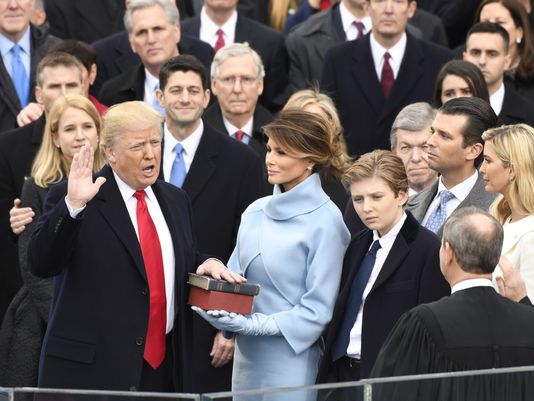
It’s been a wild ride in Washington, D.C., this week and the turmoil has roiled stocks.
The Federal Reserve increased a benchmark interest rate again, upsetting investors who fear that higher borrowing costs will crimp corporate growth. Defense Secretary Jim Mattis resigned after President Trump unexpectedly announced the pullout of U.S. troops from Syria. And by midday Friday, there was not yet a resolution to keep the federal government open after midnight.
That uncertainty is weighing on stocks Friday. All the major indexes were down in midday trading, and have lost 5 percent or more from last week as investors lurch from one worry to the next. Gains for the year have been totally wiped out.
But what has happened to the “Trump Bump,” the stock rally following Trump’s election and inauguration?
It turns out this year’s slump has yet to erase Trump’s bump.
The Standard & Poor’s 500 is 15 percent higher than the day after the election in 2016 and almost 9 percent higher than inauguration day.
In early afternoon trading Friday, the Dow was down 0.77 percent and S&P 500 was off 1.03 percent.
If history is any guide, stocks may soon get a bounce, says John Lynch chief investment strategist at LPL Financial.
“The average midterm election year pullback since 1950 has been 16 percent,” he said. “Unfortunately, it happened to us in the past week. That’s no fun.”
But the rally following the swoon on average is 32 percent from trough to peak, so traders should keep that in mind, he says.
“People are scared, scared of oil, D.C., Brexit, the Paris riots and interest rates,” he said. “But we still think the economy can grow 2.5 percent or so next year and corporate profits can rise in the range of 6 to 8 percent.”